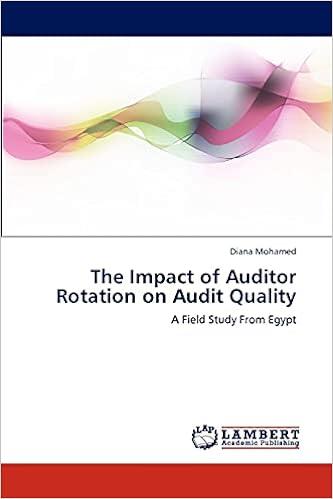Question
Question 31 Oriole Company has a contribution margin per unit of $23 and a contribution margin ratio of 40%. How much is the selling price
Question 31
Oriole Company has a contribution margin per unit of $23 and a contribution margin ratio of 40%. How much is the selling price of each unit?
|
| $57.50. |
|
| $38.33. |
|
| $9.20. |
|
| Cannot be determined without more information. |
Question 33
Marigold Company has the following data: Variable costs are 80% of the unit selling price. The contribution margin per unit is $440. The fixed costs are $606000. Which of the following expresses the break-even point in dollars?
|
| 0.20 x 606000 = X |
|
| 606000 0.80 = X |
|
| ($606000 $440) x 0.80 = X |
|
| $606000 0.20 = X |
Question 34
Crane Company produces flash drives for computers, which it sells for $20 each. Each flash drive costs $10 of variable costs to make. During April, 1800 drives were sold. Fixed costs for April were $3 per unit for a total of $5400 for the month. If variable costs decrease by 20%, what happens to the break-even level of units per month for Crane Company?
|
| It is 20% higher than the original break-even point. |
|
| It decreases about 90 units. |
|
| It decreases about 108 units. |
|
| It depends on the number of units the company expects to produce and sell. |
Question 35
Bramble Company manufactures a product with a unit variable cost of $43 and a unit sales price of $76. Fixed manufacturing costs were $81200 when 8120 units were produced and sold, equating to $10 per unit. The company has a one-time opportunity to sell an additional 1200 units at $54 each in an international market which would not affect its present sales. The company has sufficient capacity to produce the additional units. How much is the relevant income effect of accepting the special order?
|
| $51600 |
|
| $1200 |
|
| $8120 |
|
| $13200 |
Question 38
The cost to produce Part A was $4.10 per unit in 2019. During 2020, it has increased to $7.50 per unit. In 2020, Supplier Company has offered to supply Part A for $5.10 per unit. For the make-or-buy decision,
|
| incremental revenues are $1.00 per unit. |
|
| incremental costs are $3.40 per unit. |
|
| net relevant costs are $3.40 per unit. |
|
| differential costs are $2.40 per unit. |
Question 39
Swifty Company uses 9100 units of Part A in producing its products. A supplier offers to make Part A for $5. Swifty Company has relevant costs of $8 a unit to manufacture Part A. If there is excess capacity, the opportunity cost of buying Part A from the supplier is
|
| $0. |
|
| $27300. |
|
| $45500. |
|
| $72800. |
Question 41
Oriole, Inc. is unsure of whether to sell its product assembled or unassembled. The unit cost of the unassembled product is $16, while the cost of assembling each unit is estimated at $18. Unassembled units can be sold for $51, while assembled units could be sold for $67 per unit. What decision should Oriole make?
|
| Sell before assembly; the company will save $2 per unit. |
|
| Sell before assembly; the company will save $14 per unit. |
|
| Process further; the company will save $2 per unit. |
|
| Process further; the company will save $16 per unit. |
PLEASE HELP ME, I'LL MAKE SURE TO RATE!
Step by Step Solution
There are 3 Steps involved in it
Step: 1

Get Instant Access to Expert-Tailored Solutions
See step-by-step solutions with expert insights and AI powered tools for academic success
Step: 2

Step: 3

Ace Your Homework with AI
Get the answers you need in no time with our AI-driven, step-by-step assistance
Get Started


